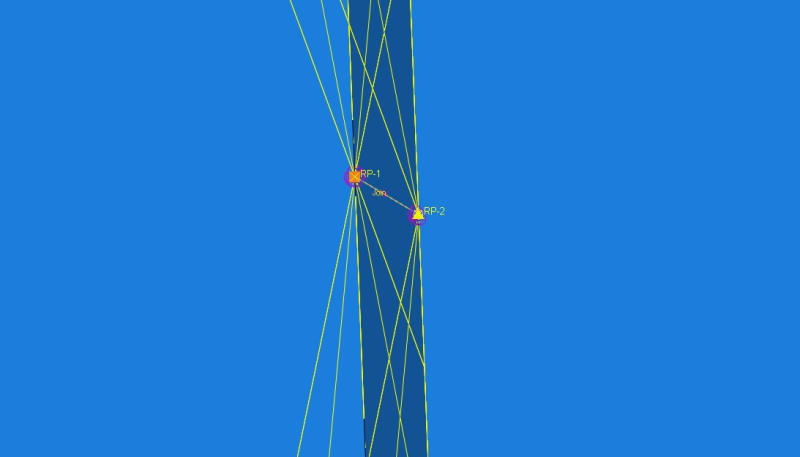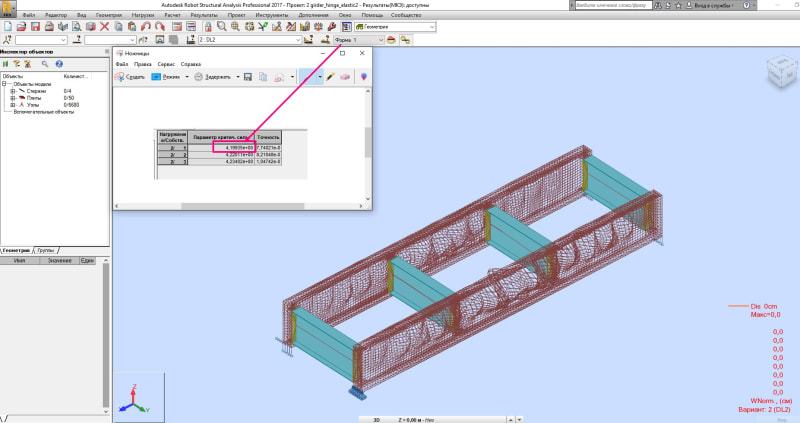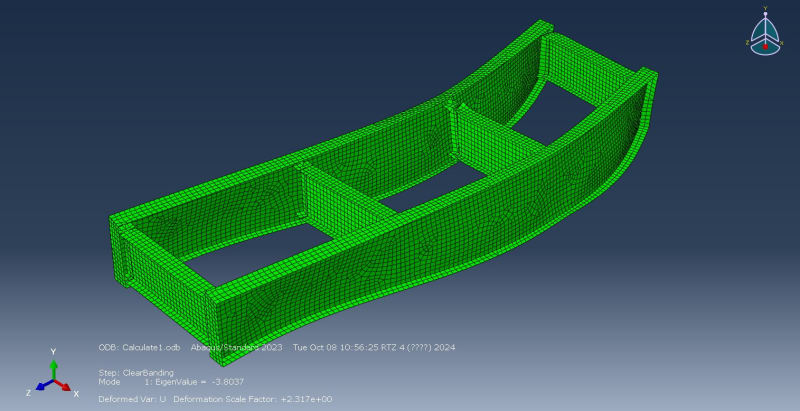cie-engineer
Structural
Hello everyone !
I try to calculate buckle procedure for 2-girder model with intermediate stringers. As a result i obtained the negative eigenvalue (-3.8).
For taking into account the connection rotational stiffness between stringer and girder i used the "join" connector + spring elemts with N*m/rad stiffness. Is it correct ?
Same time the results from other software (Autodesk Robot) i have got completely different result.
What i have done wrong on abaqus ?



I try to calculate buckle procedure for 2-girder model with intermediate stringers. As a result i obtained the negative eigenvalue (-3.8).
For taking into account the connection rotational stiffness between stringer and girder i used the "join" connector + spring elemts with N*m/rad stiffness. Is it correct ?
Same time the results from other software (Autodesk Robot) i have got completely different result.
What i have done wrong on abaqus ?





